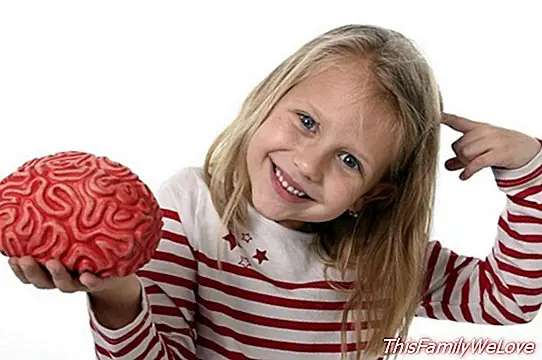Crossed laterality, a difficulty to learn

The cerebral laterality it is the preference to use one side of one's body. As they grow, children will build their laterality to have a spatio-temporal referential point. This reference is vital to automate basic learning, to organize myself internally and to organize everything that surrounds me.
When the audio-vision-motor systems of our children are developed correctly or being right-handed, nor being left-handed children will have problems, but if the maturation is not correct, it will be a child with school failure.
These children have attention problems and fatigue easily. A good one lateral organization eye-hand-foot-ear favors the resolution of school and personal problems.
When there is no dominance on the same side
The ideal is that they offer a dominance on the same side, either the right side or the left side, that is, having a homogeneous laterality. If this does not happen, we say that it has crossed laterality.
Children with cross laterality, eye-hand especially, right-handed and left-handed of the eye or on the contrary they will give us literacy problems, for the low viso-spatial domain they possess.
Main consequences of crossed laterality
- Difficulty in the automation of reading, writing and calculation
- Investments in reading and writing numbers and letters.
- Errors when reading.
- Substitutions of some letters by others.
- Difficulties with basic mathematical concepts.
- Spatial and temporal disorientation.
- Psychomotor awkwardness and lack of rhythm.
As a result of all this the school subject is very affected, without forgetting the emotional issue. They become unmotivated children, with little interest in school activities, and even in others, due to their problems of attention and concentration. Your self-esteem is usually very low.
From what age can cross-laterality be treated?
The best treatment is early detection, so from 4-5 years we can and should evaluate the laterality, with the clear objective of preventing crosses.
If it already exists, it must be resolved in one of the senses.
How can we treat cross laterality?
The treatment must be adapted to each patient taking into account the origin and the difficulties that it is causing.
The base therapy is the neurofunctional reorganization, which will unlock the development of the individual, organizing its nervous system and taking advantage of the possibilities of regeneration of the Nervous System (Neuroplasticity).
With the maturation of the Nervous System we will solve all the symptoms of crossed laterality described above, the difficulties of attention, of temporal space organization, and their emotional and self-esteem problems and, as consequences, their school barriers
Cross pattern exercises for cross laterality
These "cross-pattern" exercises correspond to a stage before eighteen months of age, but if an older child does not show a clear tendency to one side or the other of his body he should perform these exercises until he masters them.
1. Homolateral drag
It has to be placed face down on a smooth surface, with the left arm and the left leg in an upward position, like the drawing, while the right arm and the right leg are facing down. We will teach you to move forward by reversing the position, uniformly and as slowly as possible.
Simultaneously, we will teach you to turn your head and look at the hand that goes up each time. When the left hand is up, turn your head and look at it, and vice versa. It has to keep an adequate rhythm and the head has to rotate evenly. We have to practice this for five minutes every day.
2. Cross pattern crawling
We will tell the child to crawl on the knees and hands. Your crawling should be loose and rhythmic: synchronized. It should be done according to the crossed pattern, that is, the right hand and the left knee should touch the ground at the same time and vice versa. The hands should have the palms down flat, the fingers should point forward and the feet should drag them.
As you are using your hand and knee from opposite sides simultaneously, balance and rhythm should be loose and natural.
3. Walking in a cross pattern
It is about walking normally: the hand and foot of the opposite sides move forward at the same time. This gives balance when walking. To teach the child we will say: "Look how I point the opposite foot with my finger while I walk". We must observe if the hand and the foot of opposite sides move at the same time, with a fluid rhythm.
4. Right-Left Orientation
The time has come to teach the child the concepts of right and left, so that they are automatic. While walking or running in a cross pattern, we will say: "turn left" or "turn right", as if it were a game. At first you will have difficulty, but with practice you will be able to master the spatial orientation.We will practice for ten minutes every day. Generally, with three weeks of exercise children take these concepts.
Beatriz Bengoechea. Psychologist and Family Counselor
It may interest you:
- The cerebral laterality of children: difficulties at school
- Exercises to define the laterality of children's brain
- Left-handed children: the world from the mirror




